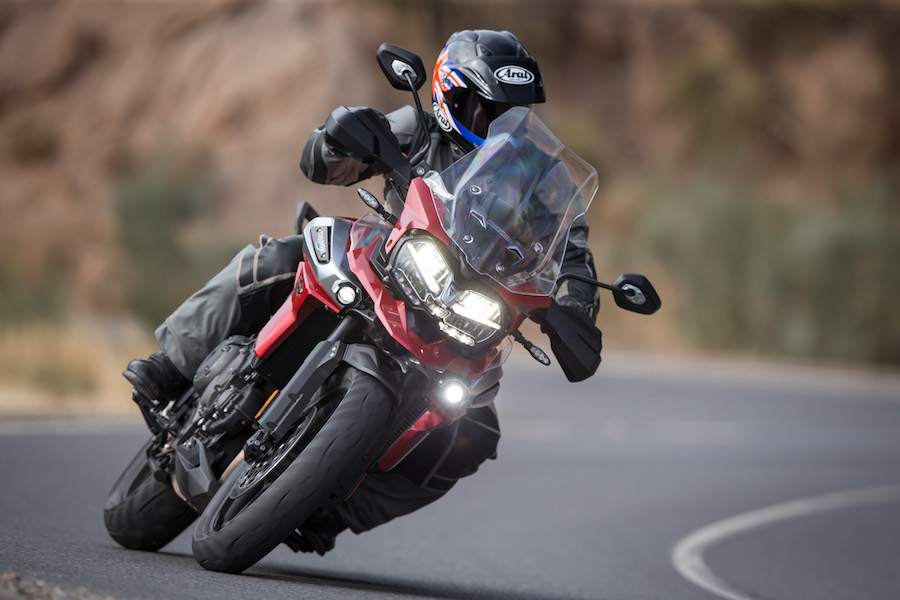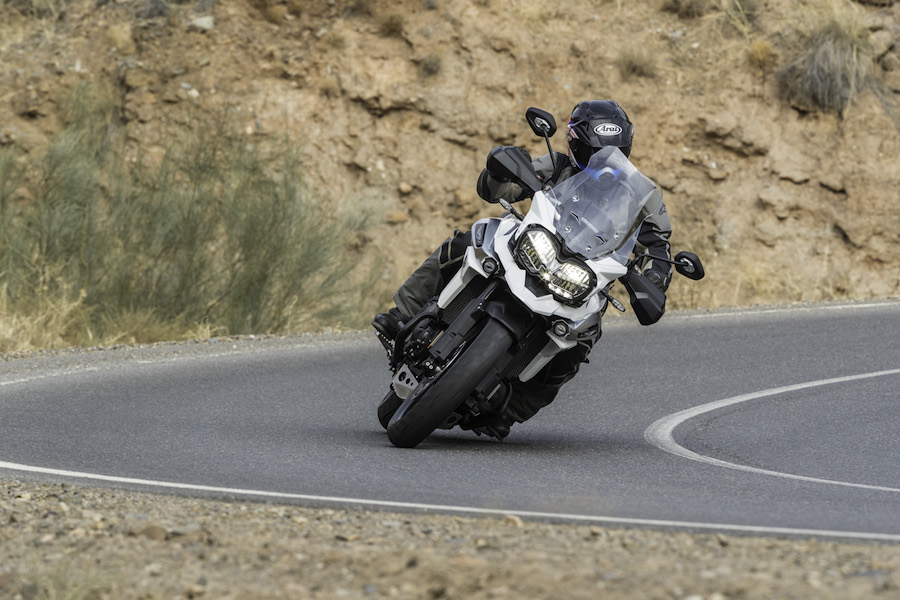The biggest and immediately noticeable change to Triumph’s third-generation Triumph Tiger 1200 is its whole heap of extra zip. I’m 10 minutes into my 200km squirt on the 2018 range-topping totally tarmac-focused XRT variant in the Spanish Badlands behind Almeria and I’m already loving it.
Triumph’s Chief Engineer Stuart Wood has just informed me there are around 100 improvements in this new model over the uprated second-gen Explorer introduced in 2016, which was enough to make this one worthy of a name change; a slicker, sharper-sounding Tiger 1200 moniker, the Explorer tag gone for the 2018 model year.

When Triumph’s Tiger Explorer adventure tourer made its debut at EICMA back in 2011, it was aimed squarely at BMW’s R 1200 GS cash cow, and for good reason. It was the long-standing king of the adventure touring segment and the bike which represents a quarter of BMW’s none too insignificant annual production.
Since then, a six-year production run has seen Triumph deliver a healthy 26,800 examples of its top-end triple to the global marketplace, making it a no-brainer for the British company to spend a sizeable slice of its R&D resources in developing an extensively revamped third-gen version for 2018.
While the engine architecture and tubular steel trellis chassis remain essentially unchanged from its ancestor in terms of concept, the water-cooled 1215cc 12-valve triple with chain-driven DOHC and a balance shaft to eliminate undue vibration, has been seriously revamped internally to deliver a significant upgrade for a crisper, more immediate power delivery — and it shows.

Adding to this in terms of extra zest,
the bike is now significantly lighter, weighing in at up to 11kg less than its predecessor (depending on which one of the six different models we’re talking about). Triumph claims this weight saving has been achieved across the entire engine, chassis and exhaust package, delivering improved manoeuvrability on all models, as well as better off-road agility and handling on the two wire-wheeled XCX and XCA dual-purpose on/off road variants.
This new and addictive extra zip is delivered by the all-new crank assembly, now 3kg lighter, the flywheel a whopping 2.5kg lighter, and another 0.5kg saved on the crankshaft itself. This makes it much more responsive from low revs, but without being snatchy or abrupt from a closed throttle. The zestful but controlled fuelling delivered by the Keihin ECU is near perfect – indeed, it’s hard to think of another bike which has such a fluid power delivery and effortless transition through the six-speed gearbox from way low to way high. Gearchanges are accomplished seamlessly and smoothly without touching the clutch lever, thanks to Triumph’s all-new multi-directional electronic Shift Assist system. It was the first time I’d experienced a no-hands downshifter on a bike with shaft final drive, and it was frankly flawless. It’s worth noting this is the first such device Triumph has fitted to any of its production models, and it got it spot-on, first time.

That two-way powershifter is just one of the many ways in which the new bike delivers the highest level of state-of-the-art electronic technology yet to be found on any Tiger model. The ride-by-wire digital throttle offers a choice of up to six riding modes (see annotations).
Either new or much improved over the previous-generation Explorer are the keyless ignition, hill-start control, and see-’round-corners lighting which forms part of the all-LED lighting equipment. There’s semi-active WP suspension, an updated and very easy to use cruise control, cornering ABS developed with Continental, and a legible and readily adjustable full-colour five-inch TFT dash, with settings and data readily accessible via Triumph’s five-way joystick on the left control pod.
Read the full feature in the current issue (Vol 67 No 14) of AMCN on sale now !

RELATED READING:











